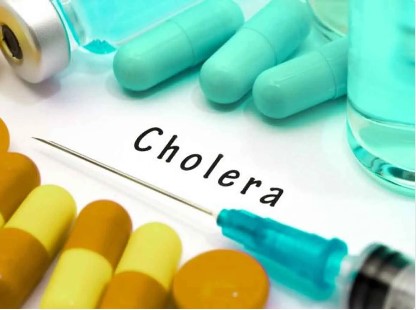Health
Lassa Fever: Edo Records One More Death, 97 Cases
Published
2 years agoon
By
Editor
The Edo State Government says one more person has been confirmed dead of Lassa Fever while 97 cases of the desease were recorded across the state.
This brings total fatalities recorded in the state to 10.
The Edo State Commissioner for Health, Prof. Obehi Akoria, disclosed this in a statement made available to newsmen by the state Commissioner for Communication and Orientation on Thursday.
The statement said Etsako West, Esan West and Esan North East were the most affected local government areas in the state.
The statement said while Etsako West recorded 38 cases of the 97 confirmed cases in the state, Esan West recorded 24, and Esan North East, 19.
“Others are Esan Central, 3; Esan South East, 2; Etsako East, 2; Owan East, 2; Akoko Edo, 2; Ovia North East,2; Oredo, 2 and Etsako Central, 1.
“She said the total fatalities recorded in the state were confirmed in Etsako West (4); Esan West (2); Esan NE (2); Etsako East (1) and Oredo (1).”
The statement urged for the collaboration of residents to contain the pandemic across all communities in the state.
The statement said the government has continued to step up surveillance and response activities to curb the spread of the disease and ensure the health and well-being of residents in the state.
She said the total fatalities recorded in the state were confirmed in Etsako West (4); Esan West (2); Esan NE (2); Etsako East (1) and Oredo (1).
READ ALSO: Doctor Collapses, Dies If Lassa Fever While Performing Surgery
Reiterating the government’s commitment to ensuring the health and safety of residents, the health commissioner urged residents to comply with all health protocols to contain the spread of the disease so as to keep themselves and their loved ones protected from the disease.
Prof Akoria charged, “While the government is implementing a number of measures to prevent the spread of the disease in the state, we urge everyone to support the government’s efforts in curbing the spread of Lassa fever by complying with guidelines to stay healthy and safe.
“Wash your hands frequently with soap and water; avoid contact with rat urine or feces; avoid consuming contaminated food or water and seek medical attention immediately if you experience any symptoms of Lassa fever, such as fever, headache, muscle pain, and weakness.”
You may like


FG Tracks 1,277 Persons As Lassa Fever Kills 122


NCDC Confirms 80 Deaths From 413 Lassa Fever Cases In 11 States


Lassa Fever Kills 12 In Ondo, 112 Cases Confirmed


Lassa Fever: Edo Records 115 Cases, 13 Deaths, Releases Emergency Numbers


Doctor Collapses, Dies If Lassa Fever While Performing Surgery


Edo Govt Raises Alarm Over Rising Cases Of Lassa Fever
Health
LASG FLags Off Polio Outbreak Response Campaign
Published
6 months agoon
January 20, 2025By
Editor
The Lagos State Government, through the Lagos State Primary Health Care Board, has launched the 2025 Polio Outbreak Response Campaign, reaffirming its commitment to eradicating polio and safeguarding the health of its children.
The ceremony, held at the Simpson Primary Healthcare Centre, was led by the First Lady of Lagos State, Dr. (Mrs.) Claudiana Ibijoke Sanwo-Olu, represented by Mrs. Widad Jumoke Mustafa, a member of the Committee of Wives of Lagos State Officials (COWLSO).
In her address, the First Lady emphasised the state government’s proactive measures to keep Lagos polio-free, highlighting the critical importance of the campaign in preventing the debilitating effects of poliomyelitis, which can result in paralysis or death.
READ ALSO: IMPEACHMENT: Lagos Ex-Speaker, Obasa’s ‘Sins’ Revealed
The First Lady also called on parents, community leaders, and stakeholders to support the campaign by ensuring eligible children are vaccinated.
Targeting children aged 0-59 months, vaccination teams will administer the Oral Polio Vaccine (OPV) to prevent virus transmission.
Dr. Kemi Ogunyemi, the Special Adviser on Health, expressed gratitude to Lagosians for their continued cooperation in the fight against polio. While appreciating all healthcare workers and partners for their services, Mrs. Ogunyemi encouraged parents to present their children and wards for the exercise.
Also speaking, the Chairman of Lagos Mainland Local Government, Mrs. Omolola Rashidat Essien opined that Immunization is key in ensuring that children are kept safe from polio and other vaccine preventable diseases.
Dr. Abimbola Bowale, the Supervising Permanent Secretary, Lagos State Primary Health Care Board, who also spoke at the event, underscored the life-saving importance of immunization.
“All children aged 0-59 months need multiple doses of the polio vaccine to ensure full protection. Any child missed represents a potential risk for the poliovirus to spread. The vaccine is safe, effective, and crucial in keeping our communities polio-free,” he stated.
Dr. Bowale also outlined several strategies to ensure the success of the campaign, including fixed post teams stationed at primary healthcare centres and public health facilities, house-to-house visits, and a transit strategy to reach special locations such as places of worship, schools, motor parks, and other public venues.
The event concluded with Dr. (Mrs.) Claudiana Ibijoke Sanwo-Olu officially launched the campaign, marking a renewed effort to maintain Lagos State’s polio-free status.

The Lagos state suspected cholera cases have risen to 421.
The Commissioner for Health, Akin Abayomi disclosed this on his Instagram handle @profakinabayomi on Saturday.
“As of June 20, 2024, an additional four suspected cholera cases have been reported, as illustrated in the accompanying graph,” he wrote.
He noted that the Emergency Operations Centre in collaboration with all relevant partners is actively engaged in contact tracing, community-based surveillance, awareness campaigns, sample testing, and ensuring that confirmed cholera cases receive appropriate medical treatment.
READ ALSO: Two Suspects Arrested For Stealing Car From Mosque During Juma’at Prayer
On Friday, the commissioner confirmed 35 cases out of the 417 suspected cases and 24 deaths across 20 Local Government Areas in the state.
The cases were reported from Agege, Badagry, Ikeja, Mushin, Ajeromi-Ifelofun, Epe, Ikorodu, Ojo, Alimosho, and Eti-Osa.
Others were Kosofe, Oshodi-Isolo, Amuwo-Odofin, Ibeju-Lekki, Lagos Island, Shomolu, Apapa, Ifako-Ijaiye, Lagos mainland, and Surulere.
Cholera is a food and water-borne disease caused by ingesting the bacteria— Vibrio cholerae — in contaminated water and food. Cholera can cause severe acute watery diarrhoea, and the severe forms of the disease can kill within hours if left untreated.
In Nigeria, cholera is an endemic and seasonal disease, occurring annually mostly during the rainy season and more frequently in areas with poor sanitation.
READ ALSO: Police Arrest 28yr Old Suspected Cultists, Recover Gun In Delta Community
The World Health Organisation on Thursday announced a spike in cholera in several regions of the world, with almost 195,000 cases and over 1,900 deaths reported in 24 countries since the start of 2024.
WHO said the Eastern Mediterranean Region reported the highest number of cases, followed by the African Region, the Region of the Americas, the Southeast Asia Region, and the European Region.
The global health body, however, noted that there are no reported cases in the Western Region, according to its bulletin released on Wednesday.
It said it exhausted its global stockpile of Oral Cholera Vaccines by March but was able to exceed “the emergency target of five million doses in early June for the first time in 2024.”

By Silver Yeibake
Autism, commonly known as Autism Spectrum Disorder (ASD), is a neurodevelopmental disorder that affects communication, social interaction, and behavior. Autism is referred to as a spectrum condition since it can manifest in a variety of symptoms and abilities. While the actual cause of autism is unknown, evidence suggests that genetic and environmental factors interact to influence its development.
The risk factors include a sibling with autism, advanced age of parents, exposure to certain air pollutants and pesticides before birth, extreme prematurity, mothers with diabetes, immune system disorders or obesity, any difficulty with delivery leading to deprivation of oxygen to the baby’s brain, fever during pregnancy, lack of certain vitamins minerals during pregnancy, and certain genetic conditions, such as Down, fragile X, and Rett syndromes.
“Risk factors can not on their own cause a disease. However, they can increase the likelihood of that disease in a person.”
It is important to know that contrary to trending claims online, there is no scientific or medical evidence that vaccines or consumption of sugar are risk factors for autism.
READ ALSO: Kidney Stones: What You Need To Know
Autism is defined by difficulties in social interaction and communication. Individuals with autism may struggle to grasp social cues, maintain eye contact, and engage in typical back-and-forth conversations. Some people may also engage in meaningless, repetitive actions, such as hand-flapping or rocking, and have strong interests in specific areas.
It is essential to remember that autism is a lifelong diagnosis, but with early intervention and adequate care, people with autism can live fulfilling lives.
Autism treatment frequently includes behavioral therapy, speech therapy, occupational therapy, and social skills training. Each individual with autism is unique, thus interventions should be tailored to meet their personal needs and strengths.
In spite of the difficulties that autism can cause, many people with autism possess unique talents and abilities. Some people may succeed in fields such as music, art, mathematics, or programming, thus it is important for society to acknowledge and honor the qualities and achievements of people with autism.
In summary, autism is a complicated and diverse disorder that affects individuals in various ways. By raising autism knowledge, understanding, and acceptance, we can build a more inclusive society in which people with autism can thrive and attain their full potential.
Dr. Yeibake, Weriwoyingipre Silver.
Senior Registrar,
Faculty Of Pediatrics,
WACP
- Top 5 Richest African Immigrants In US
- ‘This Is Why I Hate London’, Ivan Toney Fumes After His Car Is Broken Into
- Community Violations: TikTok Removes Over 3.6m Videos in Nigeria
- Buhari Buried In Daura Amid Prayers, Tributes
- ‘Chelsea Lifted Duplicate Club World Cup Trophy After Trump Kept Real One’
- Guinea-Bissau President, Niger Republic PM, Others Attend Buhari’s Burial In Daura
- VIDEO/PHOTOS: Moment Buhari’s Remains Arrival In Nigeria
- Naira Rises In Parallel Market
- Four Dead As 3-storey Building Collapses In Kano
- Gunmen kill community leader in Bayelsa
About Us
Trending

 Metro4 days ago
Metro4 days agoJUST IN: Psychiatric Hospital Staff Shot Dead In Benin

 News3 days ago
News3 days agoFirst Female Lawyer In Mid-West Region Is Dead

 Metro3 days ago
Metro3 days agoMy Husband Grabs, Squeezes My Breasts Any Time He Wants Sex — Wife

 News3 days ago
News3 days agoWhat May Change As Lagos Tenancy Bill Passes Second Reading

 News2 days ago
News2 days agoList Of 46 Proposed New States Submitted To House Of Reps

 News3 days ago
News3 days agoDelta Community King Joins His Ancestors

 Metro3 days ago
Metro3 days agoEdo: 12-year-old Girl Killed, 14 Rescued As Police, Vigilantes Battle Kidnappers

 Metro4 days ago
Metro4 days agoPastor Arraigned Over Alleged Rape Of Married Woman In Edo

 News5 days ago
News5 days agoSenate Replaces Natasha As Committee Chairman

 Metro3 days ago
Metro3 days agoMy Wife Is Promiscuous, Sleeps With My Close Friend — Husband



























